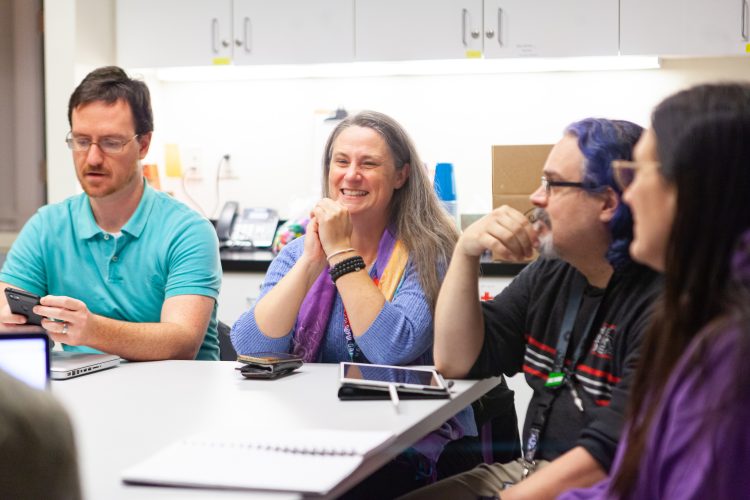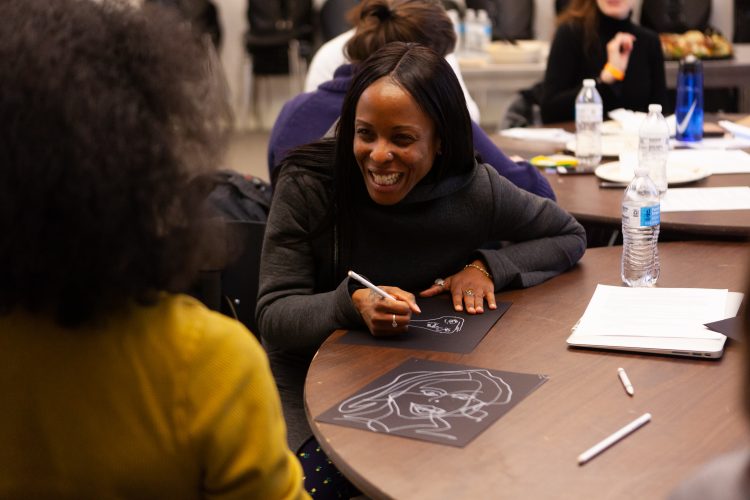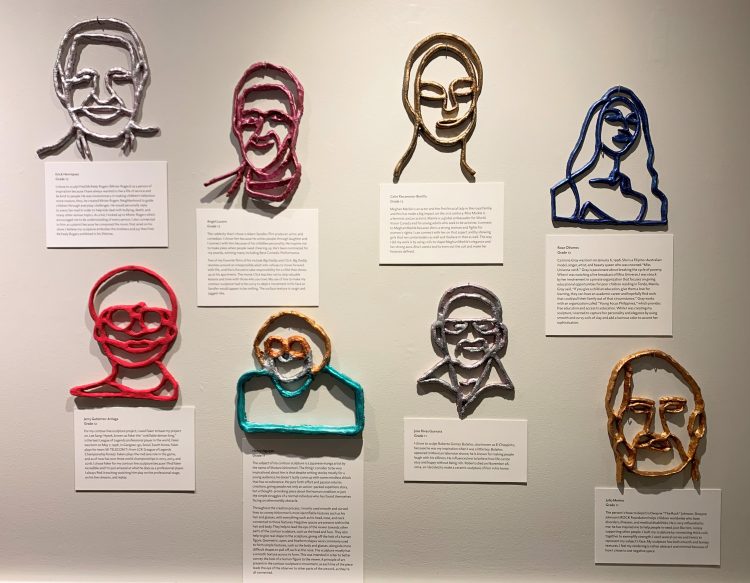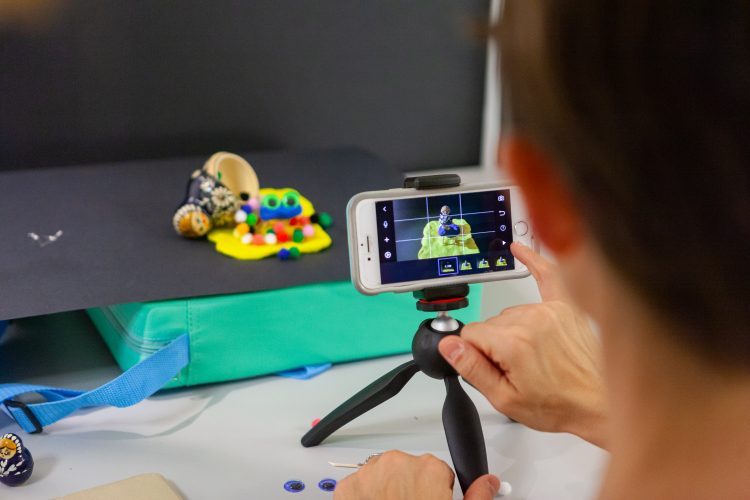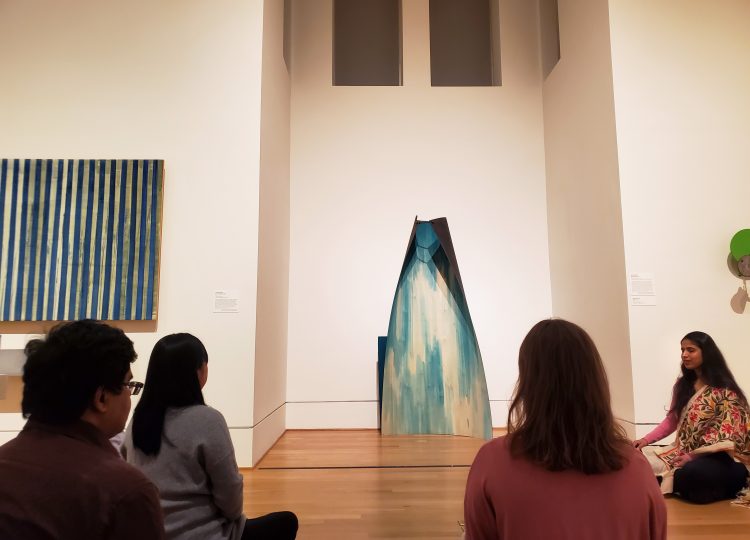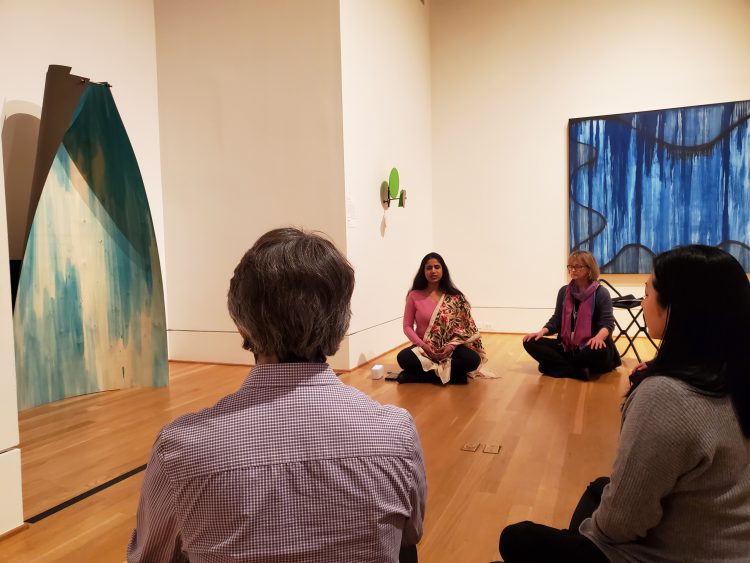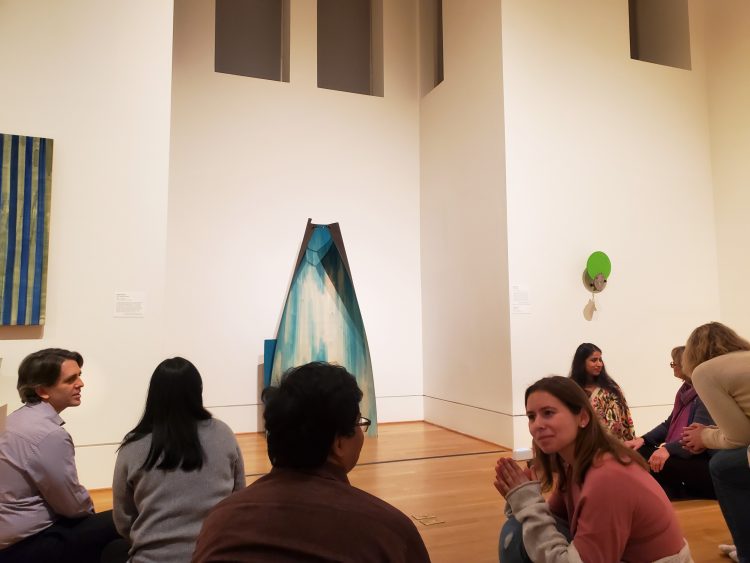Moira Dryer: Back in Business is the first comprehensive survey of this innovative and dynamic artist in almost 20 years. Among the first artists to combine both figuration and abstraction, sculpture and painting, Dryer (b. 1957, Toronto, Canada; d. 1992, New York, New York) embodies the independence of spirit and experimentation that museum founder Duncan Phillips championed. A graduate of the School of Visual Arts in New York in 1980, Dryer was a prominent figure in the city’s art scene, showing in galleries, clubs, and art spaces. Her playful and poetic approach to painting, a synthesis of art historical and contemporaneous styles, defies easy categorization. Dryer infused her works with a level of pathos that brought her paintings to life, creating abstract images with biographical elements that responded to her life in New York.
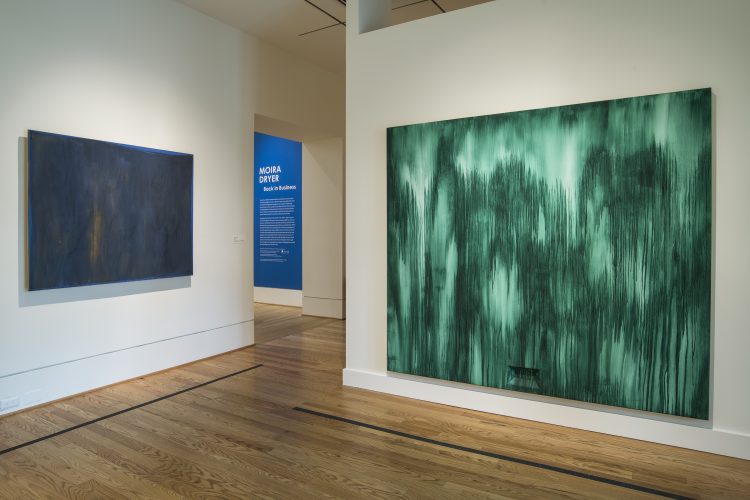
Installation view of Moira Dryer: Back in Business. Photo: Lee Stalsworth. (Left) Untitled, 1988, Casein on wood, 48 x 59 in., Hirshhorn Museum and Sculpture Garden, Smithsonian Institution, Washington, DC, Museum Purchase with funds provided by the Lannan Foundation, 1988 (Right) Captain Courageous, 1990, Casein on wood, 78 x 86 in., Courtesy Van Doren Waxter, New York
“When I observe my own work, both while making it and afterwards, it is teeming with imagery. I cannot find ‘unrecognizable’ imagery in these paintings. The various styles in painting have been digested into the language and have become familiar. The minute the brush hits there is a fertile association to be made with other paintings elsewhere. It is the reassimilation and reorganizing of how we perceive the imagery that is the new frontier; where the excitement lies.”—Moira Dryer in Tema Celeste, October 1991
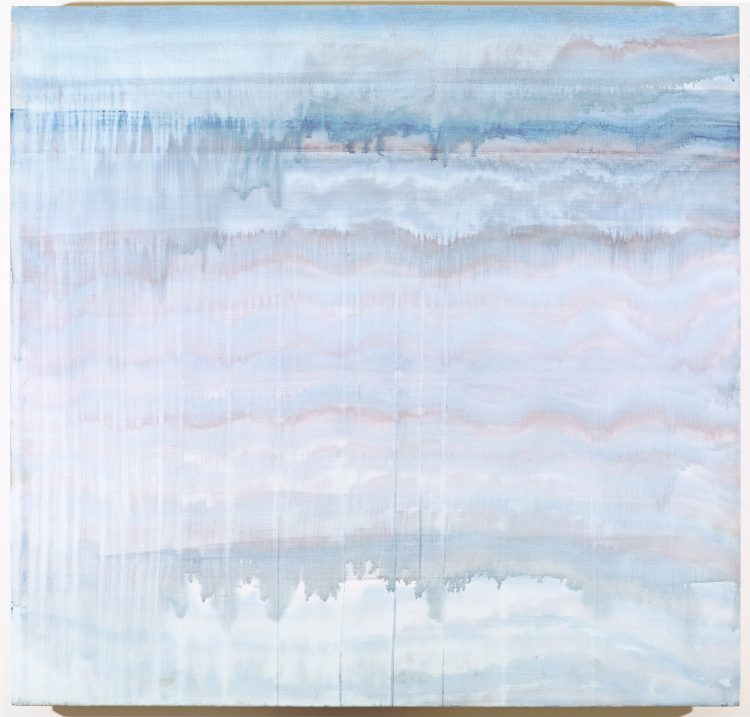
Moira Dryer, Picture This, 1989, Casein on wood, 46 x 48 in., High Museum of Art, Atlanta, Purchase with funds from Iris and Bruce Feinberg
“I used to work in the theater, on props and sets, and I was always very transfixed by the play before the actors came on or after they left the stage. That was my job and that was what I focused on. The lighting would be there, the tension and the audience would be there, but not the actors. Those props had an incredibly provocative effect. . . . So the pieces are the performers themselves, and that’s what I mean about them being animated. I see them as alive. I see them as walking away from the wall. . . . I feel as if they have a figurative scale, a figurative quality. In some cases, it’s less obvious, but there’s a fake quality to it, and that’s also why I used the word ‘prop.’”—Moira Dryer in conversation with Klaus Ottmann, Journal of Contemporary Art, Spring/Summer 1989
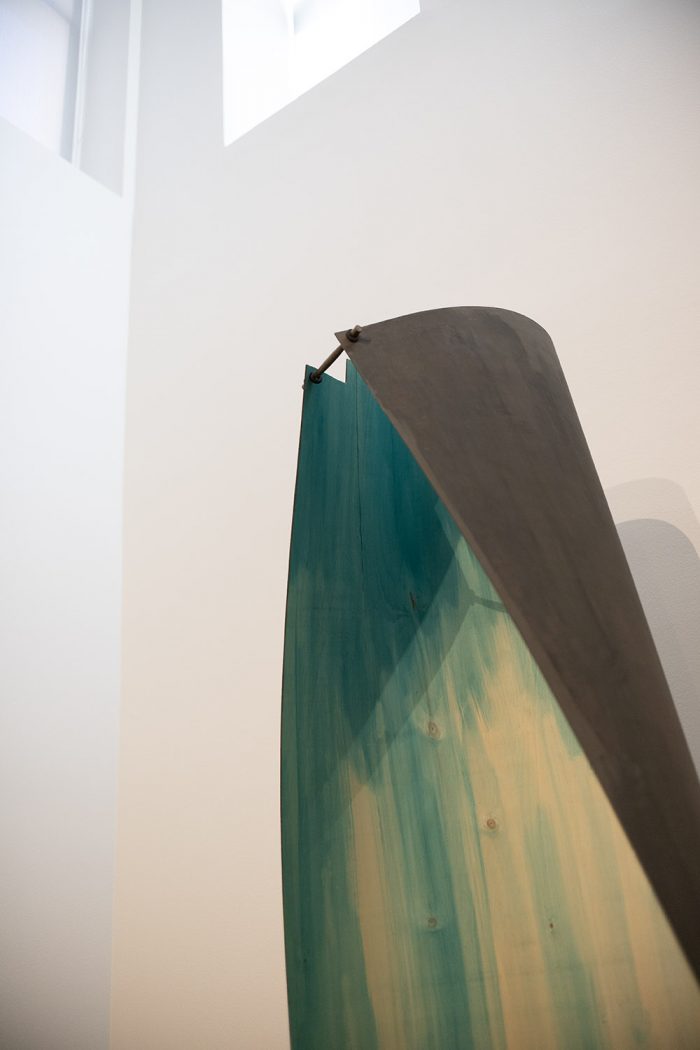
Moira Dryer, NBC Nightly News, 1987, Casein on metal, rubber, and wood, 85 x 43 x 22 1/2 in., The Museum of Modern Art, New York, Jeanne C. Thayer Fund, 1995. Photo: Ann Lipscombe
“I recognize [the signature boxes] now more as props to the painting and how they make the whole piece a prop. They give it a quality, not of artificiality but of a theatrical situation. . . . A painting that is just on the wall has one relationship to someone who looks at it. A painting that becomes more sculptural enters into its own physical arena. It establishes an arena. It draws the viewer into a more intimate relationship. . . . The box underneath, the signature or title box, evolved from looking at a lot of art in museums, where there’s an explanation of the piece underneath or next to it.”—Moira Dryer in conversation with Klaus Ottmann, Journal of Contemporary Art, Spring/Summer 1989
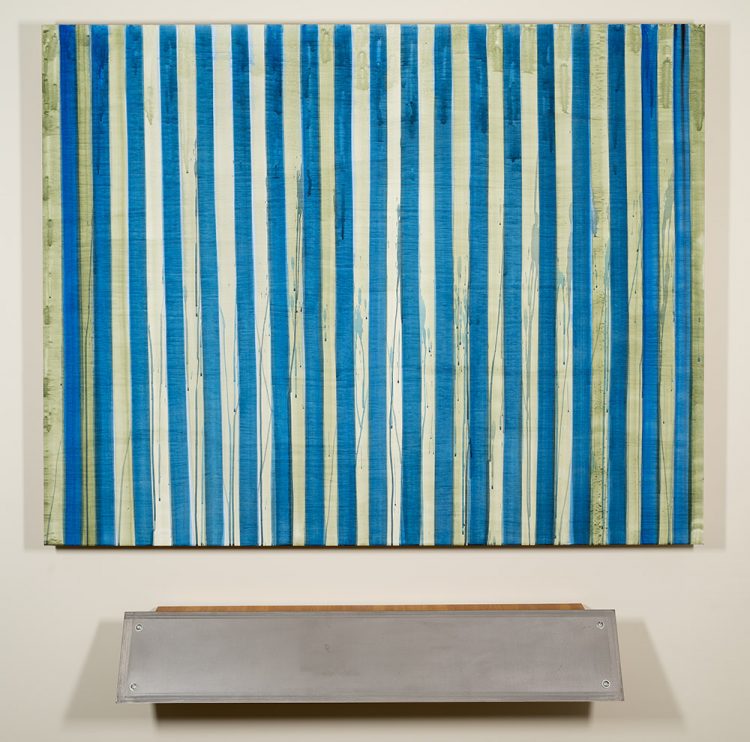
Moira Dryer, D.D. (Dangerous Days), 1990, Casein, wood, and steel, 48 x 61 x 3 1/4 in. and 8 1/2 x 45 x 9 in., Collection of Michael and Ilene Salcman

